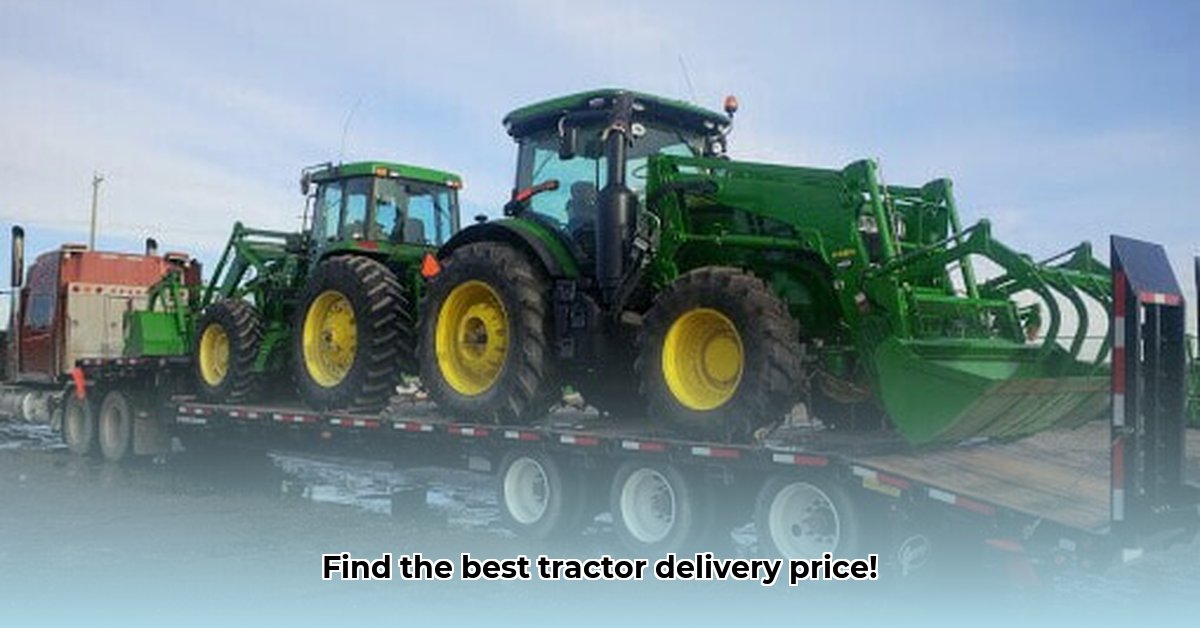
Tractor Delivery: Navigating the Challenges and Opportunities
Getting your tractor from point A to point B shouldn't be a herculean task, yet the US tractor delivery market presents unique challenges. A fragmented landscape, coupled with a lack of price transparency, creates hurdles for both farmers and transport companies. This article provides actionable intelligence and insights to simplify the process, whether you're dealing with a brand-new tractor or a vintage prize.
Understanding the Tractor Delivery Market
The US tractor delivery market is characterized by a large number of smaller, often specialized, transport businesses. Many focus on niche areas like vintage tractor transport, requiring specialized handling and expertise. This fragmentation contributes to information asymmetry, making it difficult for farmers to compare prices and identify the most reliable services. Large agricultural suppliers, while a major player in the overall market, often lack readily-available transportation data, further exacerbating the issue. This creates both challenges and opportunities for innovation within the sector. How can this lack of readily-available pricing information be overcome?
Key Considerations for Farmers
Choosing the right tractor delivery service requires careful consideration of several factors:
- Cost: Obtain multiple quotes, comparing services apples-to-apples. Factor distance, tractor size/weight, and specialized handling needs into your calculations. Negotiate where possible.
- Reliability: Check references and reviews before committing. Punctual delivery is crucial to avoid impacting planting or harvesting schedules. Delays can greatly impact profitability.
- Insurance: Verify the transporter carries adequate insurance to cover any damage incurred during transit. Protect your investment!
- Specialized Handling: For vintage or oversized tractors, confirm the transporter possesses the necessary equipment and expertise for safe handling.
Key Considerations for Transport Companies
Transport companies can improve their competitiveness and market share by focusing on:
- Technology Adoption: Implementing GPS tracking, route optimization software, and digital communication tools streamlines operations, reduces fuel costs, and enhances customer satisfaction.
- Standardized Service Packages: Offer clearly defined service packages with transparent, upfront pricing. This builds trust and simplifies the comparison process for farmers.
- Seasonal Demand Management: Anticipate peak seasons (planting and harvest) and adjust staffing and resources accordingly. Proactive planning ensures efficient service and minimizes delays.
The Regulatory Landscape: DOT Compliance and Beyond
Federal and state regulations, primarily through the Department of Transportation (DOT), govern safety standards, licensing, and vehicle maintenance for commercial transporters. Environmental regulations concerning emissions also play a significant role. Understanding and complying with these regulations is crucial for both farmers and transport companies to minimize legal and financial risks. How can regulatory bodies facilitate greater transparency in the market?
Future Trends: Technology and Market Consolidation
The tractor delivery market is poised for significant evolution:
- Technological Advancements: AI and predictive analytics are likely to play a larger role in route optimization and logistics management, leading to increased efficiency and cost savings. While autonomous vehicles remain a long-term prospect, their potential impact on the industry is significant. What role will AI play in optimizing tractor delivery routes in the next five years?
- Market Consolidation: Potential mergers and acquisitions could lead to greater standardization and transparency, but could also reduce competition. This requires careful monitoring and further research into its potential effects on pricing and service availability.
Conclusion: A Call for Increased Transparency
The tractor delivery market stands to benefit significantly from an increase in transparency and standardization. Improved access to pricing information for farmers and streamlined operations for transport companies will create a more efficient and mutually beneficial system. Greater collaboration between these two key stakeholders is essential to foster a more dependable and efficient agricultural supply chain. What steps can be taken to improve data sharing and pricing transparency?
Three Pivotal Points:
- The US tractor delivery market is fragmented, leading to information asymmetry and challenges in price comparison.
- Farmers must prioritize cost, reliability, insurance, and specialized handling when selecting a transporter.
- Transport companies can improve efficiency and competitiveness through technology adoption, standardized services, and seasonal demand management.